Using Gateway Service for NetWare
Installing and configuring each computer with a NetWare client can be very time-consuming in a large enterprise. Fortunately, there is a way to provide NetWare server connectivity without the need to install new software on each client. With GSNW, you can create a gateway through which Microsoft client computers—without Novell NetWare client software—can use NetWare file and print resources. You can make gateways for resources located in NDS trees as well as for resources on servers running NetWare 2.x or later with bindery security. These resources include volumes, directories, directory map objects, printers, and print queues.
GSNW depends on another NetWare compatibility feature of Windows Server: the IPX/SPX/NetBIOS Compatible Transport Protocol (NWLink for short). NWLink is an implementation of the Internetwork Packet Exchange (IPX), Sequenced Packet Exchange (SPX), and NetBIOS transport protocols used by a NetWare network. The Microsoft implementations of these protocols can seamlessly coexist with other protocols on the same network adapter.
The primary drawback of using GSNW is that it's harder to customize security on a user-by-user basis for NetWare resources. Each user profile must use a separate share on the gateway and, consequently, a separate drive letter, which limits the number of shares that can be created. Also, since the Windows 2000 Server must translate each server message block (SMB) call into NetWare Core Protocol (NCP) and back again, using GSNW can actually be slower than having software installed for each client.
![]()
NOTE
The translation overhead is greatly reduced when communicating with a NetWare 5-based server using TCP/IP.
Installing and Configuring the NWLink Protocol
To install the NWLink protocol, follow these steps:
- Right-click My Network Places and choose Properties. The Network And Dial-up Connections window opens, shown in Figure 20-1.
- Right-click the Local Area Connection icon, and choose Properties from the shortcut menu to display the Local Area Connection Properties window, shown in Figure 20-2.
- Click Install to display the Select Network Component Type dialog box, shown in Figure 20-3.
- Highlight Protocol in the network component list box, and click Add to open the Select Network Protocol dialog box (Figure 20-4).
- Highlight NWLink IPX/SPX/NetBIOS Compatible Transport Protocol and click OK to add the protocol to your system. You may need to insert your Windows 2000 Server CD-ROM to complete the installation process.
- Click OK to save the new network configuration.
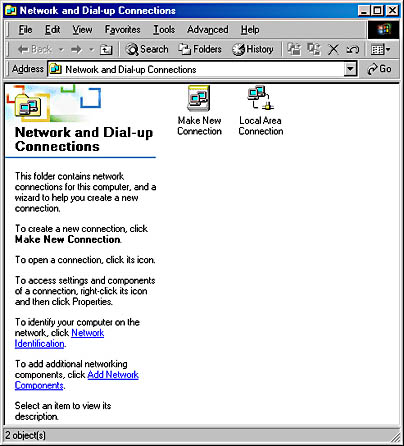
Figure 20-1. The Network And Dial-up Connections window.
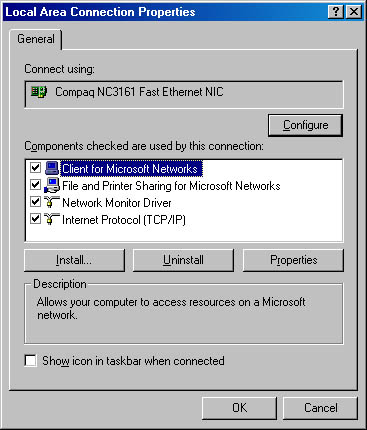
Figure 20-2. The Local Area Connection Properties window.

Figure 20-3. The Select Network Component Type dialog box.
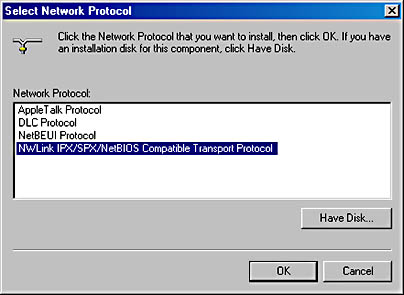
Figure 20-4. The Select Network Protocol dialog box.
Once you have installed the NWLink protocol, your Windows 2000 Server will be able to communicate with your NetWare server. You can proceed to the next step, which is installing and configuring GSNW.
![]()
NOTE
Although early versions of Novell NetWare supported TCP/IP, the Microsoft and Novell implementations of the protocol were not compatible until NetWare 5. As a result, Windows 2000 Server requires NWLink to communicate with NetWare 4.x and earlier servers. If you are communicating with a NetWare 5 server, you don't need to install the NWLink protocol before installing GSNW.
Installing GSNW
To install and configure GSNW, follow these steps:
- Right-click My Network Places and choose Properties.
- Right-click the Local Area Connection icon and choose Properties from the shortcut menu. The Local Area Connection Properties window opens.
- Click Install to display the Select Network Component Type dialog box.
- Highlight Client in the network component list box and click Add. The Select Network Client dialog box opens, shown in Figure 20-5.
- Highlight Gateway (And Client) Services For NetWare and click OK. You may need to insert your Windows 2000 Server CD-ROM to complete the installation process.
- The Select NetWare Logon dialog box appears, shown in Figure 20-6. Specify the user name, tree, and context that the gateway will use when logging on to the NetWare server.
- If the gateway will be logging on to a bindery-based NetWare server, select the Preferred Server option and then select the appropriate server from the Preferred Server list box.
- If the gateway will be logging on to an NDS-based directory tree, select the Default Tree And Context option and then provide the tree and context names to use when logging on.
- To run the NetWare login script when the gateway first attaches to the NetWare server, click the Run Login Script check box.
- Click OK to save the logon information.
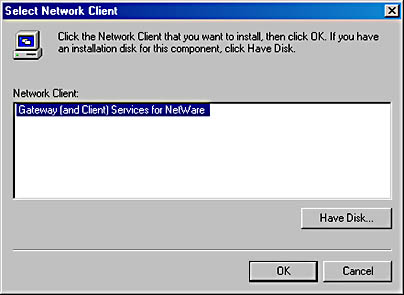
Figure 20-5. The Select Network Client dialog box.
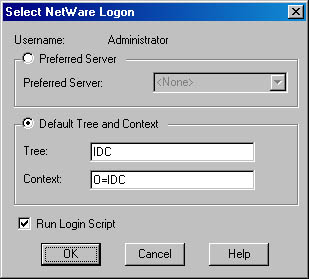
Figure 20-6. The Select NetWare Logon dialog box.
Configuring GSNW
Once you have installed GSNW, you can modify its configuration by clicking the GSNW icon in Control Panel to display the Gateway Service For NetWare dialog box, shown in Figure 20-7. In this dialog box you can set the following options:
- When logging on to a bindery-based NetWare server, select the Preferred Server option and then choose the appropriate server from the Select Preferred Server list box.
- To log on to an NDS-based directory tree, select the Default Tree And Context option and then provide the tree and context names needed to log on to the NetWare server.
- In the Print Options group, select the print options you want to use when printing to NetWare-based printers.
- To run the NetWare logon script when the gateway first attaches to the NetWare server, select the Run Logon Script check box.
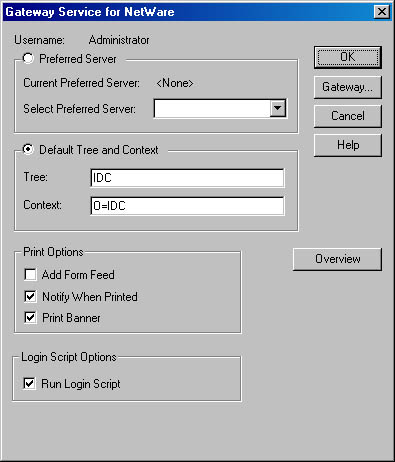
Figure 20-7. The Gateway Service For NetWare dialog box.
Enabling the Gateway
To enable the gateway, click Gateway in the Gateway Service For NetWare dialog box to display the Configure Gateway dialog box (Figure 20-8). Select the Enable Gateway check box and specify the user name and password required by GSNW to connect to the NetWare server.

Figure 20-8. The Configure Gateway dialog box.
![]()
NOTE
NetWare IDs are typically limited to eight characters or fewer.
You can also establish one or more shares on the NetWare server for use by your Windows 2000 clients. Click Add in the Configure Gateway dialog box to display the New Share dialog box, shown in Figure 20-9.

Figure 20-9. The New Share dialog box.
Once the new share has been created, click the Permissions button to specify which Windows 2000 Server users and groups have access to the resource and what their rights for the resource are. These same rights need to be established with any Windows 2000 Server share.

TIP
Everyone with rights to GSNW has access to any share you define, and each share takes up one of the 26 available drive letters. You might need to reorganize the NetWare server directory structure to minimize the number of shares required.
Configuring NetWare Server
To finish configuring GSNW, the NetWare system administrator must place the user account specified in the GSNW configuration in a group called Ntgateway and must grant that user account access to the NetWare resources you want to share on the Windows 2000 Server.
First create a group called Ntgateway on the NetWare server. Make sure that the user specified by GSNW is created on the NetWare server and is part of the Ntgateway group. Then create a share for the NetWare resource and grant the Windows 2000 user access to the share resource.
Running NetWare Utilities
With Windows 2000 Server and GSNW, you can run many of the standard NetWare utilities as well as many NetWare-aware applications from the command prompt. GSNW does not support utilities for NetWare 4.x and earlier. Also, for some administrative functions, you must use Windows 2000 Server-based management tools.
![]()
NOTE
To run NDS administrative utilities on Windows 2000 Professional, you must use the NetWare client software.
Windows 2000 Server supports many NetWare utilities that you can use to manage the NetWare network from a computer running Windows 2000 Workstation or Windows 2000 Server. (Some utilities may require additional files that are supplied either with Windows 2000 Server or with NetWare, as discussed in the next section.)
The following MS-DOS-based utilities are known to work with Windows 2000:
| Chkvol | Help | Rconsole | Settts |
| Colorpal | Listdir | Remove | Slist |
| Dspace | Map | Revoke | Syscon |
| Fconsole | Ncopy | Rights | Tlist |
| Filer | Ndir | Security | Userlist |
| Flag | Pconsole | Send | Volinfo |
| Flagdir | Psc | Session | Whoami |
| Grant | Pstat | Setpass |
The Windows 2000 Server Net Use command or Microsoft Windows Explorer perform the same functions as the NetWare Attach, Login, and Logout commands. The Net Use command is also similar to the Capture command for printing when MSDOS-based and Windows-based applications must print to a specific port. In addition, you can use the Add Printer Wizard to connect to NetWare print queues. The Net Use command can also be used to connect to volumes and printers in NDS trees as well as on NetWare bindery-based servers. The Windows 2000 Server Net View command performs the same function as the NetWare Slist utility.
Using NetWare-Aware Applications
Many NetWare-aware applications will run on Windows 2000 Server through GSNW just as if they were running on a NetWare client computer. However, not all NetWare-aware applications are supported. Many applications require special files that are supplied either with NetWare or with Windows 2000 Server.
Nwipxspx.dll
Many older 16-bit NetWare-aware applications require the Nwipxspx.dll file supplied by Novell. The file is part of the standard Novell client installation. Find it and copy it to the \SystemRoot\System32 folder on the machine where you'll be using the NetWare applications.
Netware.drv, Nwnetapi.dll, and Nwcalls.dll
NetWare-aware applications that use the NetWare API to send and receive NetWare Core Protocol (NCP) packets may require Netware.drv and either Nwnetapi.dll or, for more recent versions of NetWare, Nwcalls.dll. Netware.drv should be installed in the \SystemRoot\System32 folder when you install GSNW. If you copy any of these files to your computer running Windows 2000 Server or modify your search path during the current Windows 2000 Server work session, you must log off and then log on for the changes to take effect.
![]()
REAL WORLD Obtaining Current NetWare Software Files
To get the NetWare files you need, check with your NetWare network administrator or your local Novell representative to see if the latest client files are available locally. Or you can get the files over the Internet from ftp.novell.com. Novell also posts revisions of NetWare client software and drivers on CompuServe at http://www.compuserve.com/gateway/
EAN: 2147483647
Pages: 366